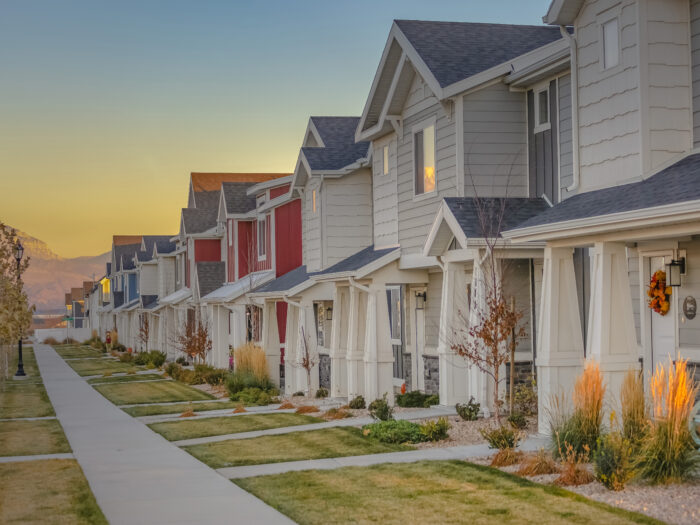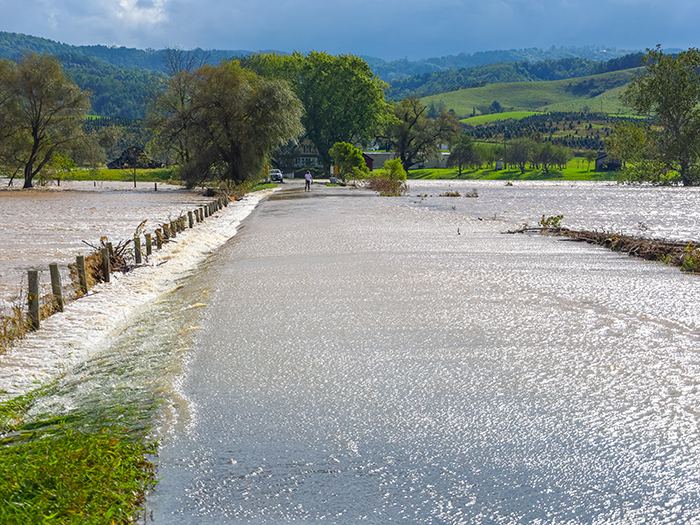Sponsored: Philadelphia Insurance Companies
Homeowners Associations Are Facing These 6 Critical Risks. How the Right Insurance Partner Can Help Manage Them

Homeowners associations (HOAs) typically provide essential services to their communities.
They help ensure that neighborhoods are well-maintained and protected, and they also foster community through events like parades and pool parties. Some HOAs also care for amenities like pools, community centers and gyms.
Like any entity, HOAs face a certain amount of risk. Whether it’s protecting association-owned buildings from property damage or making sure events are adequately secured, HOAs will want to review their exposures and make sure they have the proper insurance policies in place to protect the association in the event of a claim.
Here’s a look at six risks HOAs should be prepared for and how they can work with their insurers to address these issues.
1) Insurance to Value

Nicole Reed, Assistant Vice President of Underwriting with Philadelphia Insurance Companies (PHLY)
A hot topic in commercial real estate this year, accurate property valuations are key to making sure an HOA’s common buildings are protected in the event of a claim.
Over the past few years, underinsured properties have been a headache for commercial real estate owners. If a property isn’t insured to value, an HOA may have to pay the difference between the amount of coverage they purchased and the cost of rebuilding in the event of a claim. HOAs will want to have their properties assessed to ensure they’re purchasing enough insurance coverage.
The properties that an HOA must ensure are accurately valued include association-owned buildings: “The HOAs we are referencing are the Associations that are responsible for common amenities only,” said Nicole Reed, assistant vice president of underwriting with Philadelphia Insurance Companies (PHLY).
In addition to conducting property valuations, HOAs should look at their insurance policies to see how their carrier is responding to current market conditions and valuation issues. Some may have policies with extended replacement cost clauses, which could offer them protection for a given percentage of rebuilding costs that exceed the estimated replacement value that the HOA reported to the carrier. Others might have coinsurance clauses, which increase an insured’s liability if a property isn’t insured to value.
“If the property is written on a replacement cost basis including a coinsurance penalty, if the property is not insured to value, it could be a financial shock to the insured in case of a loss,” Reed said.
2) Pools and Ponds
Slips, trips and falls are always a concern for HOAs. But the risk of someone falling and injuring themselves increases when there are bodies of water involved. Pools, ponds, lakes and even runoff areas come with a risk of drowning and other bodily injury claims.
“This year, some frequent claims have been trip falls and drownings, unfortunately, and they’ve both occurred in pools and lakes,” Reed said.
When possible, HOAs should try to address these risks by fencing in these structures and posting signs so that the community knows about the risks of swimming. Monitoring fences and gates to make sure they’re in good condition — so that children can’t sneak in and accidentally hurt themselves — is another good risk management practice.
3) Weather Events
In the case that a severe weather event occurs, HOAs will want to make sure their buildings are protected. High wind speeds, hail, surprise freeze events and brush fires all put association-owned properties like pool houses or community centers at risk.
Weather patterns have shifted in recent years, causing some states to see weather events they haven’t experienced before. Southern states have experienced freezes, for instance. HOAs and their insurers, therefore, may face claims caused by weather they haven’t encountered in the past.
These surprise weather events have had ripple effects, both for the property insurance market and for risk management. Underwriting losses have led to increases in commercial property insurance rates in recent years.
“It’s impacting the market because the amount of claims that are coming in were just not anticipated,” Reed said.
On the risk management end, HOAs might want to take a look at whether their buildings are prepared to withstand certain weather events. For example, Reed said, HOAs in Southern states should investigate whether their buildings can withstand a freezing weather event.
4) Security
Whether it’s a gated entry with a guard or a team of roaming officers, HOAs are increasingly employing some form of security service to protect their communities.
“Today, more and more associations are electing to have some type of security or guards,” Reed said.
While these services can help make neighborhoods safer, they bring with them exposures, especially if the security guards are armed and a weapon accidentally discharges. Reviewing the contracts an HOA has with the security service can help clarify who’s liable if a claim occurs. Ideally, the security firm’s insurance policy will cover the work they do for the association.
“I would highly recommend that there is a contract for all parties involved,” Reed said.
5) Events
As the pandemic has waned, more and more associations are holding events like Fourth of July parades or “meet the neighbors” barbeques. “Everybody wants to get together; they want to do fun things. A draw for an association is having an active association, so having clubs and having events that bring everybody together is essential,” Reed said.
These events help foster community, but they can come with risks, especially if vendors come and serve food or alcohol. As with security services, HOAs will want to review any contracts with third-party contractors to see whether they’re protected under the vendor’s insurance policy. Brokers and carriers can help them navigate these issues to ensure they’re protected from any claims that could arise.
“Be aware of the additional exposures you could be taking on when looking at events and vet them with your broker agent and your carrier partner,” Reed said. “Start working with your partners well in advance of that event so everybody’s on the same page, everybody knows what is happening.”
6) Review Your Conditions, Covenants and Restrictions
When HOAs are assessing the exposures they face, it’s important to review the governing documents, known as conditions, covenants and restrictions. CC&Rs outline which elements of a property an HOA is liable for and what they will need to purchase insurance to protect.
HOAs tend not to be responsible for residential buildings, for instance, unless the property is a condo. The CC&Rs will outline whether unit owners are responsible for damage to their property or if the association is liable.
Making Insurance and Risk Management a Breeze for HOAs
To manage these exposures, HOAs will want to find a strong insurance and risk management partner. Philadelphia Insurance Companies (PHLY) helps make both risk management and insurance purchasing services easy for HOA insureds.
On the risk management end, its PHLYSense platform helps insureds detect water leaks, limiting the amount of damage that can occur. In buildings like pool houses, clubs or community centers that aren’t used frequently, this tool can help make sure insureds are aware of a damaged pipe or any leaks before the damage becomes more widespread.
“Some of these buildings aren’t used on a daily basis. So the freeze damage may not be found for a little while if somebody doesn’t think to go check the building,” Reed said. “It wouldn’t necessarily fix the issue, but it would make sure the issue is found a lot quicker.”
PHLY’s HOA Portal allows associations to easily submit applications for insurance. The portal gets applications into the hands of underwriters more quickly, allowing them to assess the exposures and offer quotes. “You hit submit, and immediately you’ll know whether or not it needs further vetting or if it will go right to the mailbox for underwriter assignment,” Reed said.
Binding coverage, too, is simple with PHLY’s electronic binding service. “If we can automatically bind, it just saves everyone a ton of time,” Reed said.
These tools make risk management and insurance purchasing a breeze, allowing busy HOAs to get back to their daily lives with the security of knowing the association is protected — something everyone can appreciate.
To learn more, please visit: https://www.phly.com/Products/HomeownersAssoc.aspx.
![]()
This article was produced by the R&I Brand Studio, a unit of the advertising department of Risk & Insurance, in collaboration with Philadelphia Insurance Companies. The editorial staff of Risk & Insurance had no role in its preparation.










